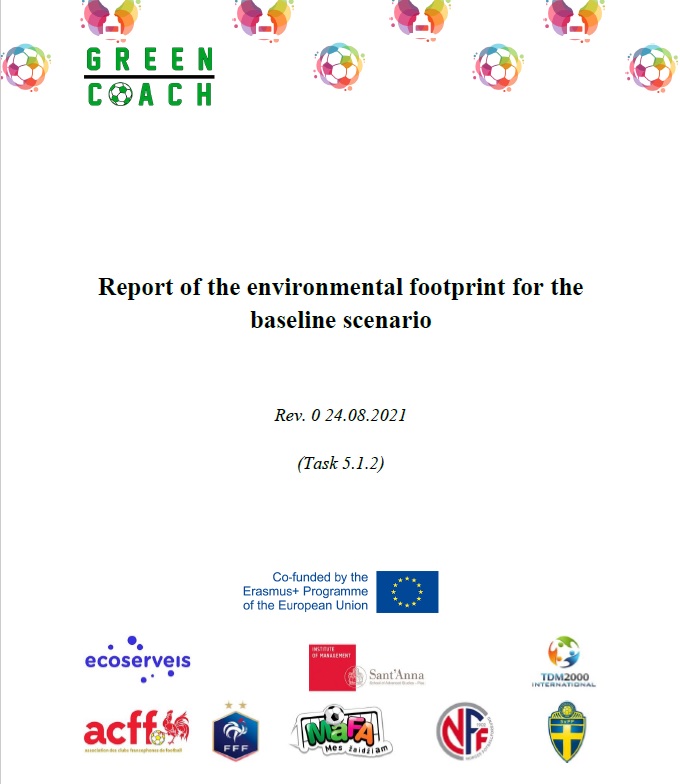GREEN COACH
What is the environmental footprint of a football match?

The study carried out by Sant’Anna investigated the main environmental hotspots of a football match assessing the environmental footprint.
Within the framework of the project, our partner Sant’Anna conducted an analysis with the objective of develop an environmental footprint calculation of the main activities conducted by grassroots football clubs, identifying environmental improvement opportunities. This analysis aims at identifying the most impactful processes, so- called “hotspots”, associated with the activities of the grassroots football clubs.
The analysis conducted by the Institute of Management from the Italian Sant’Anna School of Advanced Studies collected data from 5 different EU countries such as Belgium, France, Lithuania, Norway and Sweden, for a total of 22 different amateur clubs.
Using LCA (Life Cycle Assessment) and PEF (Product Environmental Footprint) methodology and secondary data from database where primary data were not available, were calculated the average environmental footprint of a grassroots football match.
Considering the limited dimensions of the sample, the obtained results should be applied to other context with caution, but they can be the basis for a deeper and wider analysis on the whole football universe.
The research shows how, if we consider the activities connected to the life cycle of a football match, transport and sportwear and equipment are the most relevant followed by electricity and water consumption. If we focus on sportwear and equipment, leather football shoes production is by far the most impactful, followed by sport suit and sports bag.
Furthermore, the study proved the importance of working outside the clubs’ boundaries focusing on activities on which they do not have a direct control. As regard the transport, football clubs should collaborate with public authorities, supporters and other main stakeholders in order to foster a more sustainable mobility.
Green procurement practices should be developed in order to buy more sustainable products especially in the field of sportwear and equipment. However, even in the case of transport, green procurement may have role, i.e., purchasing of a team bus, etc.
Lastly, another issue to be considered when we calculate the environmental footprint of grassroots football are the events organized by football clubs, such as tournaments with the participation of a high number of teams. During these events, the clubs provide food and other “extraordinary” services for also more than one day. This activity naturally causes environmental impacts per match that that are higher than the “average” environmental impacts.

